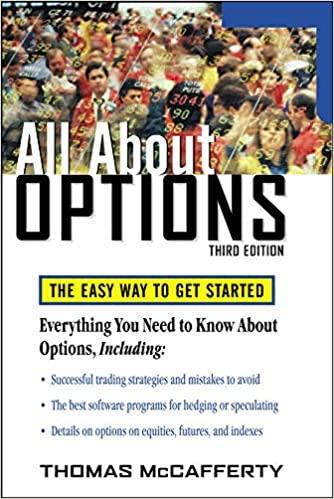Question
After performing the financial ratio analysis, assessment of the data revealed that Flagstaff Inc. uses less debt than its industry average. As discussed in the
After performing the financial ratio analysis, assessment of the data revealed that Flagstaff Inc. uses less debt than its industry average. As discussed in the textbook, there are advantages and disadvantages of infusing debt in the mix. In attempts to capitalize on the potential benefits of debt financing, in 2021 the company increased debt by 93.3%. Unfortunately, the financial results imply that Flagstaff Inc. appears to have failed to utilize the debt capital effectively and experienced a decline in overall financial performance from 2020 to 2021. Sales declined by 4.8% and NOPAT dropped by 6.3%. The 2021 FCF was a -$52.0 million which influenced the drop in the stock price by 10%. Given the poor performance in 2021 and evidence that the company underperformed industry in 2020 and 2021, the CFO directed members of the team to consult with investment bankers to develop a capital structure strategy.
As presented in the table, the investment bankers have determined the interest rate the firm would pay at different debt levels. Using data from the financial statements, Flagstaff Inc.'s capital structure in 2020 consisted of 16.2% debt and 83.8% equity with a debt-to-equity ratio of 19.4%. With the significant increase in debt, the capital structure shifted to 26.3% debt and 73.7% equity with a debt-to-equity ratio of 35.7% in 2021. Data for the risk-free rate, the market risk premium, and an estimate of the firm's unlevered beta are also provided.
| Capital Structure Decisions and Degree of Leverage | ||||||||||
| Percent Financed with Debt (wd) | Before-tax Cost Debt (rd) | Additional Data | ||||||||
| Risk-free rate (rRF) | 2.30% | |||||||||
| Market risk premium (RPM) | 9.34% | |||||||||
| Unlevered beta (bU) | 0.84 | |||||||||
| 0.0% | 0.00% | Tax rate (T) = 21% | (Link the tax rate) | |||||||
| 10.0% | 2.54% | |||||||||
| 18.5% | 3.36% | |||||||||
| 26.3% | 4.29% | |||||||||
| 33.3% | 5.98% | |||||||||
| 41.0% | 8.94% | |||||||||
| 50.0% | 10.65% | |||||||||
| 66.7% | 14.98% | |||||||||
| Debt/Value Ratio (wd) | Equity/Value Ratio (ws) | Debt/Equity Ratio (wd/ws) | After-tax Cost of Debt | Levered Beta (bL) | Cost of Equity (rs) | WACC | ||||
| WACC at the optimal debt ratio = | ||||||||||
| Optimal debt ratio = | ||||||||||
| Use this section for your analysis. | ||||||||||
Please show work through excel
Step by Step Solution
There are 3 Steps involved in it
Step: 1

Get Instant Access to Expert-Tailored Solutions
See step-by-step solutions with expert insights and AI powered tools for academic success
Step: 2

Step: 3

Ace Your Homework with AI
Get the answers you need in no time with our AI-driven, step-by-step assistance
Get Started


